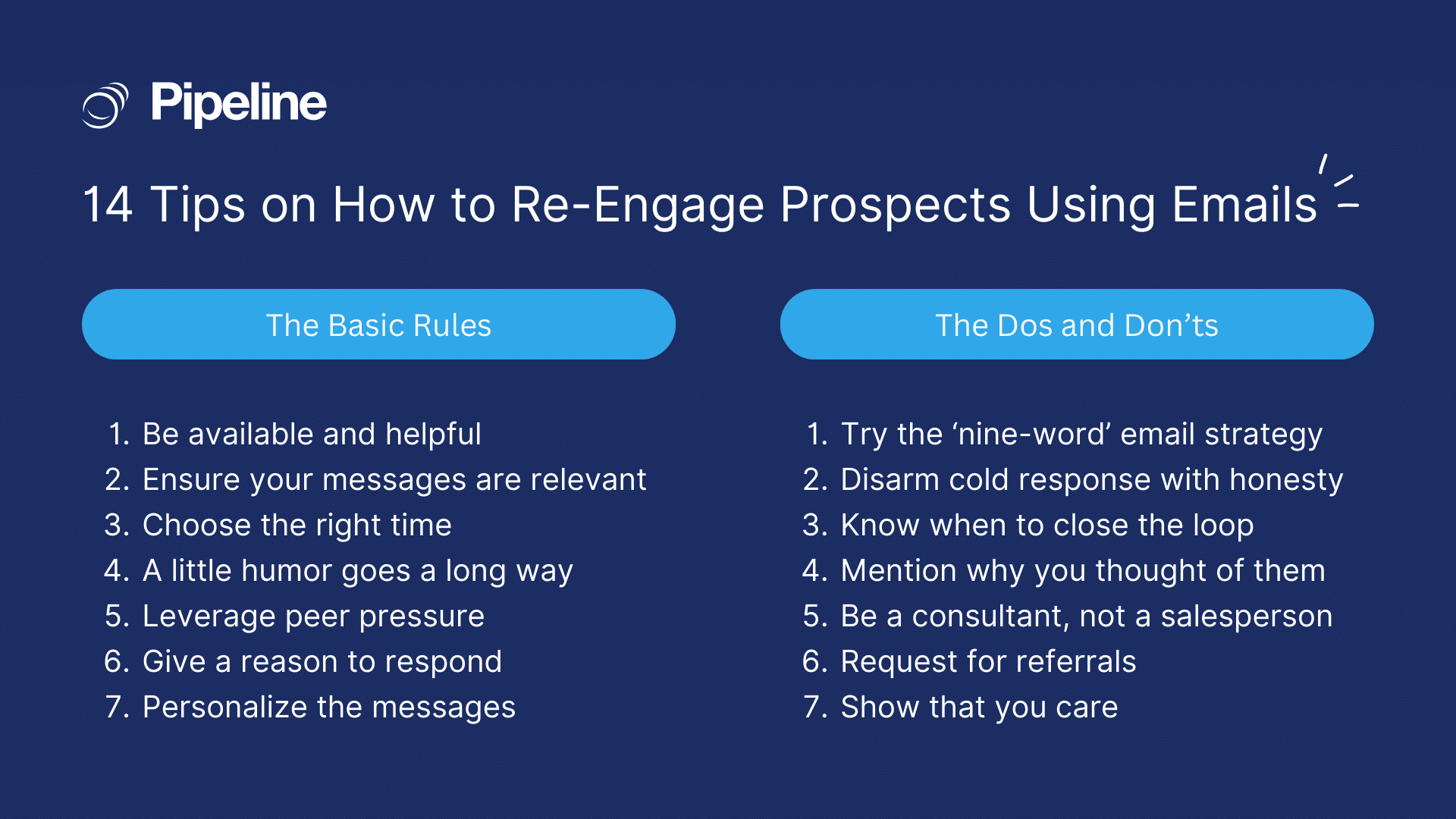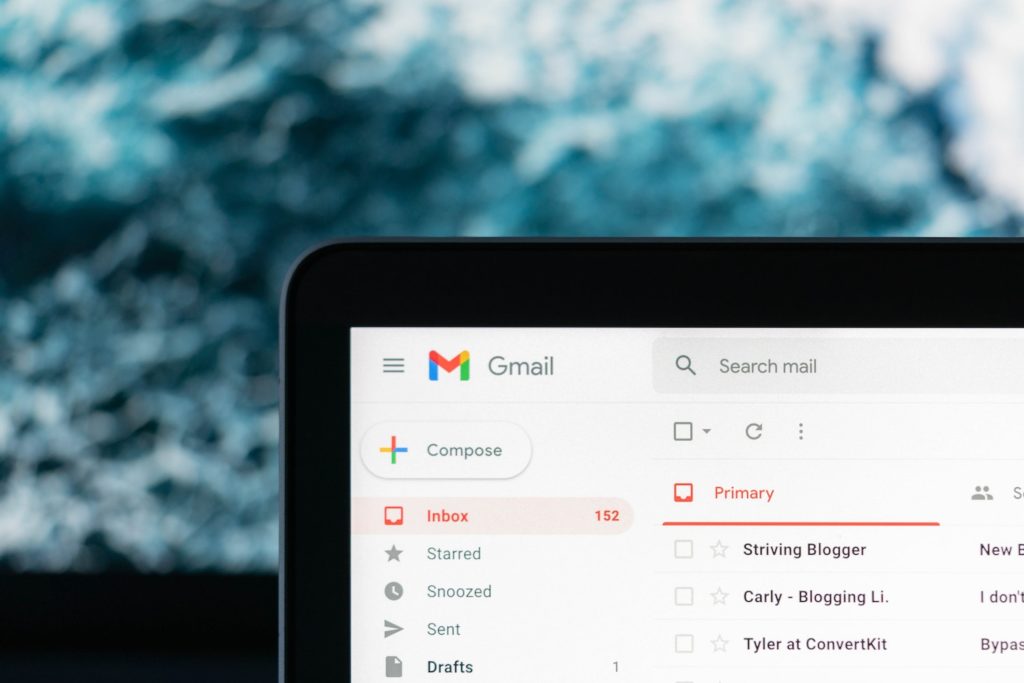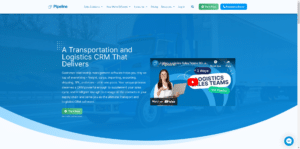You can’t win every prospect. But you can re-engage cold prospects
.
In fact, 60% of customers say ‘no’ four times before saying ‘yes’ to a pitch. So, if you get a cold response on the first move, consider contacting them again after a few months. You’ll have more experience and time to prepare a better sales pitch.
In this blog, we’ll focus on using email to win cold prospects you thought you had lost for good. We’ll uncover the how-tos and some practical examples where you can directly adopt them to your sales approaches.
Email to Re-Engage Cold Prospects
If there’s one hard truth every sales rep and marketer has to deal with, it is the fact that even the most promising deals can fall through. How you respond – will to a great extent – determine the outcome.
One way is to dismiss such leads as “water under the bridge” and move on to the next best lead. But buyers are a tough audience by nature. If you don’t impress them, it’s difficult to win their hearts. Therefore, we suggest you fight the fight!
Additionally, after all the effort you have put into building the relationship, you shouldn’t just give up. Instead of letting cold or dead prospects fizzle out, you can use email effectively to re-engage with cold prospects and hopefully win some deals.
Why Is It Important to Re-Engage Cold Prospects?
There are a number of convincing reasons why re-engaging is a great idea. First, re-engaging dead or cold leads is always easier than marketing to new ones.
When a warm prospect suddenly turns cold that could mean many things. It could be that they are dealing with more urgent matters. It could also be a competitor has redirected their focus and is now weighing more options.
Letting them go at this point means losing not just their business but countless opportunities to get referrals from them. You are also losing the chance to be the top brand on their minds when they eventually are ready for a deal.
How to Use Email to Re-Engage Prospects
The biggest challenge in using email to re-engage cold prospects is knowing what to say, when, and how to say it. Admittedly, you simply cannot keep sending emails to cold prospects asking if they are now ready to make a purchase.
For that reason, we’ve gathered 14 ideas on re-engaging leads through emails as listed below.

1. Be Available and Helpful
The one thing you are sure of regarding your cold prospects is that they are not ready to buy. For now, the best thing to do is to find ways to be helpful to them and be available. Doing this ensures that over time, you’ll be the first person to call when they reconsider buying. You’ll get top priority.
2. Ensure Your Message is Relevant
In order to make your email messages relevant, you want to keep abreast of the prospect’s current situation and try to understand future needs. This will ensure that your messages resonate with them.
A great place to start in this regard is checking the news and their social updates. Find out what is happening to them or their competitors and adapt your message accordingly. If they find your content interesting and specialized to their needs, they will be less inclined to discard them.
3. Have a Case of the Fridays? Timing Matters
Time your emails appropriately to increase the likelihood that your prospects open them. Friday afternoon is the worst time to send an email. This is because your prospects are likely in a rush to finish their tasks so that they can enjoy the weekend.
The second worst day is Monday morning. Your sales emails would have to compete with countless other unread messages from the weekend. And they’re more likely to process emails from their boss and colleagues than a sales email.
In the same vein, it is important to send your emails at optimal intervals. Consider automating the process like using email drip campaign features on your CRM to ensure every message goes out exactly when it is supposed to.
Practical Examples of Re-Engaging with Email
4. The Nine-Word Email
According to a report from the Harvard Business Review, curiosity is one of the strongest triggers for making a message viral. With that in mind, the nine-word email aims to pique cold prospects’ curiosity, ensuring they click on your email and get the message.
The general formula for this email goes like this:
Subject: Prospect’s first name e.g. Joyce
Body: Are you still interested in getting [insert your service or product]?
It could be tempting to add something to this shockingly brief message, but the directness and simplicity is the whole point.
5. Disarming Cold Prospects with Honesty
There is a marked difference between being desperate and showing some level of vulnerability. You might have tried different approaches to re-engage your client only to get a lukewarm response. It might be time to call in the big guns by showing your hand.
Example:
Hi Joyce, We have not managed to take a step forward since we sent you our proposal. It seems to me like we might have gone wrong somewhere. Could I ask for an honest assessment of what we may have missed and what we need to do to get the ball rolling?
What makes this message disarming, apart from the honesty, is that it can move the conversation from sales to creating a relationship. And you never know, you might actually discover a weakness on your side that you need to address.
6. Know When and How to Close the Loop
When all else fails, it might actually be time to let go. Dropping the leads gives you a chance to move on from a hopeless situation. At the same time, it could also trigger your prospects to take tangible actions.
In this case, you could find a creative way of requesting to put a prospect’s project on hold. They might not see this coming and that could prompt a reaction.
7. Add Personal Touches
Over the course of your interactions with the prospect, you must have learned a thing or two about them. For instance, they might have mentioned specific challenges they needed to solve.
Periodically reaching out to them with product updates that address those specific challenges can be a winning strategy. To make your email outstanding, add a personal touch, such as explaining why you thought of them.
8. Play the Role of a Consultant Rather than a Sales Person
After you have your initial pitch to a prospect but get a cold shoulder, keeping the relationship warm is challenging. However, you could take a consultative selling approach to turn the table.
For instance, make it a habit to share market updates and trade insights to keep them up to speed with the latest trends. Seeing this comes at no cost, they might appreciate the gesture and turn to you when they are ready to buy.
9. Request for Referrals
If you build a genuine relationship with your dead prospect, they can become a reliable source of referrals, even if they decide not to sign a deal with you.
They likely understood the value of what you had to offer but were not ready to commit for one reason or another. Ask them if they know others facing similar challenges, and they could connect you to them.
10. Show that You Care
Creating an authentic connection and delivering value revolves around caring about prospects as human beings and not just leads. With that in mind, you can always find common points of interest to connect. You may establish a stronger relationship and build trust.
How to Get a Prospect to Respond to Your Emails
Nothing is quite as unnerving as having a formerly warm prospect ignore your emails. As you may have noticed, it takes time and effort to come up with the right things to say when re-engaging prospects with email. But you need a response to know whether your efforts are paying off.
Here are some tips to get prospects to reply to emails:
11. A Little Humor Goes a Long Way
When you make your prospect smile, they tend to relax. And this can melt their objections and make them more receptive. Find a way to break the ice when emailing and you might just soften their hearts.
12. Leverage Peer Pressure
Mentioning other brands will likely elicit a reaction. Human beings by nature take cues from those around them. So, if your lead realizes that their competitors are receptive to your ideas, they might just want a piece of the action.
13. Give a Reason to Open and Respond the Emails
Always provide a reason for your requests as people tend to comply when you tell them why. Prospects, like everyone else, are busy and they will be doing a favor if they respond to your email. Convince them why it is necessary.
14. Personalize The Messages
Readers are more trusting of messages that mention their names. Additionally, you can research specific challenges that they are facing and suggest a solution. Mention something unique about their brand, their latest achievement, or a post on their social accounts.
Re-Engaging Cold Prospects Is Easy with CRM
No one wants to get a cold or no response from a prospect. When this happens, don’t see it as the end of the relationship but as a cue to step back. Give yourself time to come up with a better sales approach, and them to consider your offers.
When you’re ready to re-engage, send them emails that speak to them by following the abovementioned tips. Perhaps the second or third time is the charm!
To take the burden away from manually setting up reminders to reconnect and sending sequences of emails, leverage the email automation feature on your CRM like the Email Drip Campaign from Pipeline CRM.
You can save templates, monitor the campaign performance, and set unique entry and exit criteria. For instance, an email will be automatically sent after 3 months of the last conversation and will stop once you get a response. You can also use this feature to set up a welcome email after a lead downloads a white paper to make that first-touch interaction really happen.




